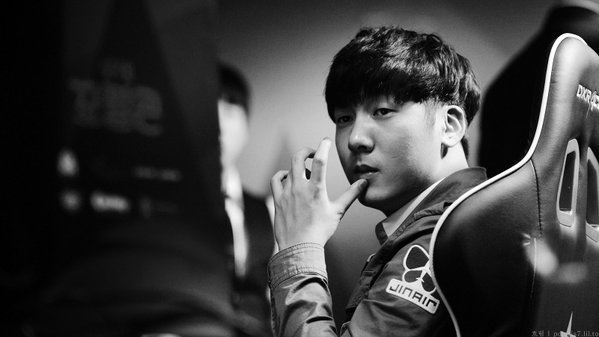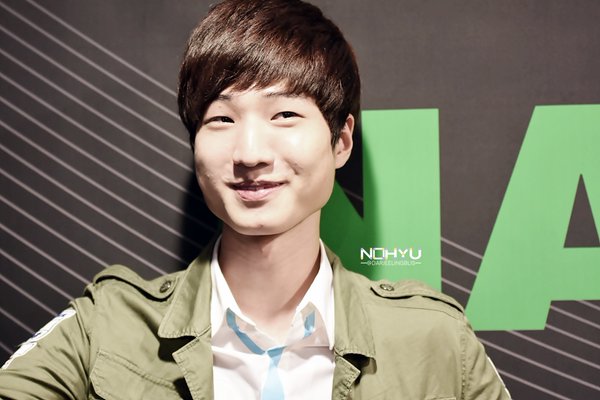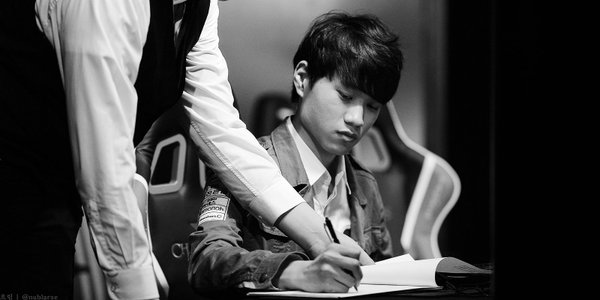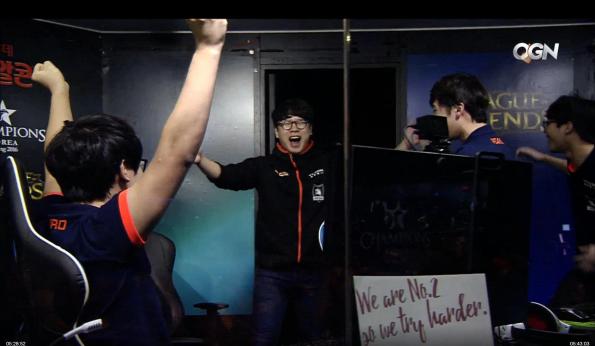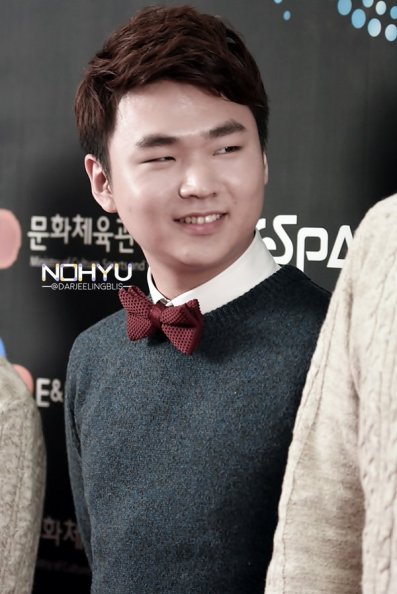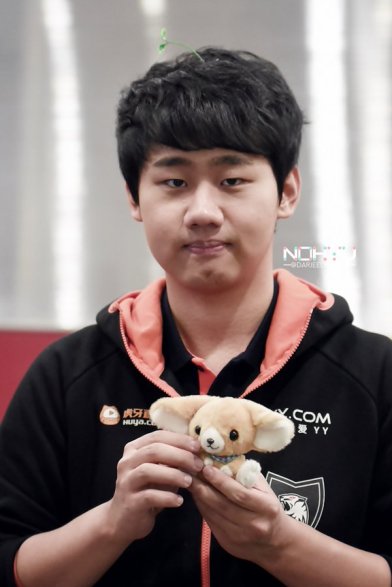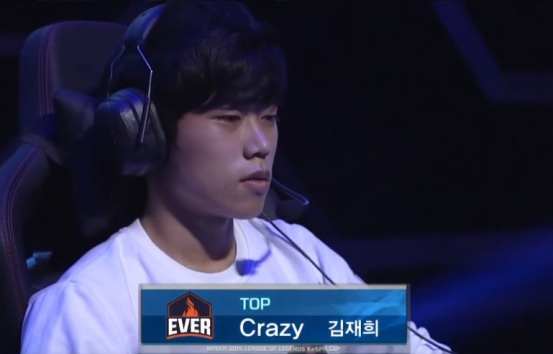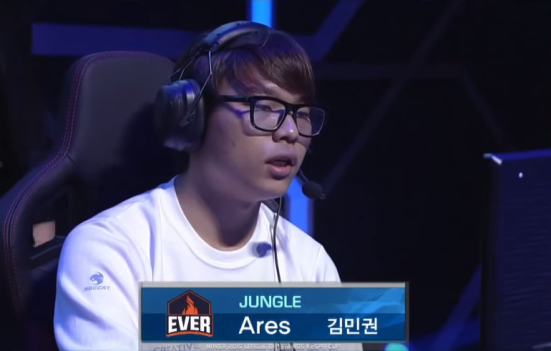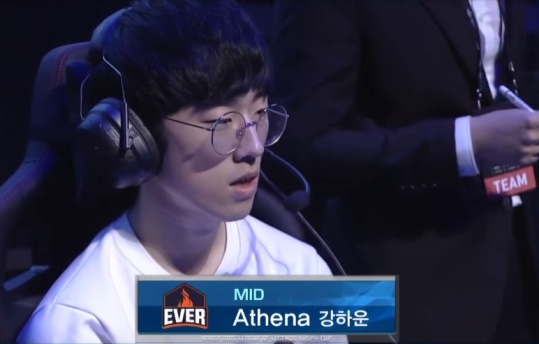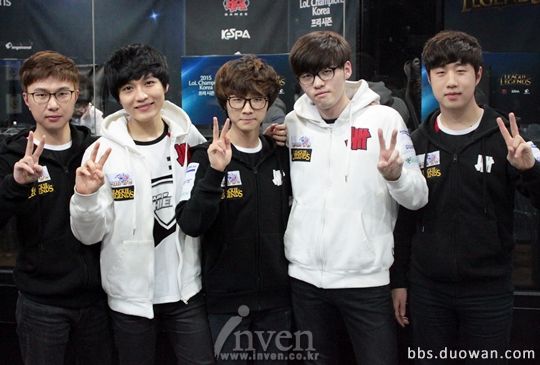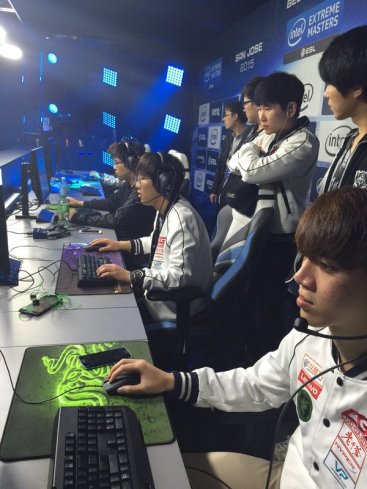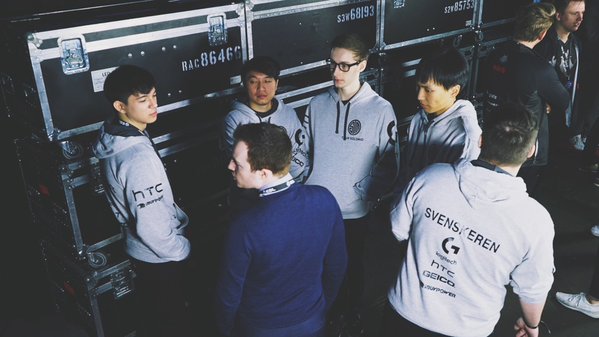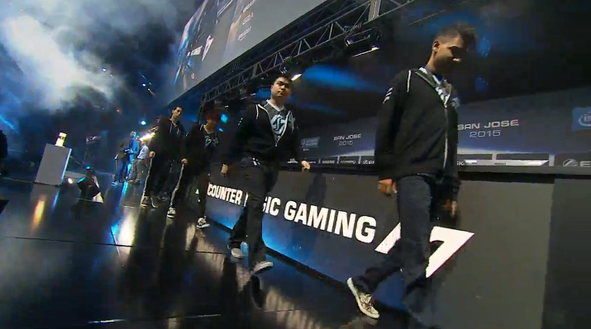In this article I will go into detail about the number one seed from Korea, SK Telecom T1. The most popular team from Korea, SK Telecom has utterly dominated the region since the exodus of over 50 players last Winter. They come into Worlds fresh off a tough Mid Season Invitational loss looking to reclaim the crown. I will be discussing their likely placement at Worlds and reviewing how their overall season went. I’ll go over every player individually and where I believe them to fit in the context of the Worlds tournament.

Season In Review (87-22 Total Record, 79.8% Win Percentage)

Entering Champions this year, SK Telecom was the only KeSPA organization who seemingly upgraded at every position. Whereas organizations such as CJ Entus, Najin e-mFire, KT Rolster, and Jin Air Green Wings lost a host of impact players to other regions, SK Telecom retained four of the five players from the 4th place finishing SK Telecom S lineup and dropped three of the five players from the underwhelming SK Telecom K lineup. They dropped the under-performing, erratic bot lane from SK Telecom K, in favor of the more stable SK Telecom S bot lane, along with sticking with a more carry oriented top laner in Marin, who serves as a dominant in and out of game leading voice. SK Telecom T1 looked primed and ready to renew their dominance at the very top of Korea after the exodus of roughly 80 Korean players during 2014.
The initial Spring split was fairly underwhelming as they experimented a bit more with a rotating mid lane situation with Faker and Easyhoon. With almost every team in Korea adapting to the wide sweeping roster changes and the newly formed KOO Tigers starting Spring off hot on a tear, SK Telecom were firmly in the middle of the pack, not where they wanted to be. Finishing the first round robin with a disappointing 4-3 set record, including losses to CJ Entus, Jin Air Green Wings, and the aforementioned KOO Tigers, they wouldn’t truly hit their stride until the second half of the split. Not dropping a single set during the second round robin, they would go 14-2 in overall matches, garnering themselves the second seed in the Champions playoffs. With the 5.5 changes that introduced Cinderhulk, they would square off in the semifinals against what was arguably the true second best team in Korea, CJ Entus. After starting rookie jungler Tom for the first two matches, both losses, SK Telecom would finally bring their now-standard lineup in for game three and proceed to reverse sweep CJ Entus, which included the single best match of the season with game four. SK Telecom would quickly down the declining KOO Tigers in three straight matches to claim the championship and a place at the Mid-Season Invitational.

At MSI, SK Telecom would enter in unprepared and on a poor schedule as the Champions finals had only been conducted days prior. Regardless, SK Telecom would go undefeated, albeit quite shaky, during the group stages. Matched up against Fnatic in the semifinals, they would be given a tough test in a close five game set where they would come out the victor. Moving into the finals, they would face off against Edward Gaming. Despite playing Easyhoon for the first three matches, SK Telecom would push it to a fifth and final match where EDG had one of the most spectacular drafts I’ve ever seen, their coach Aaron out playing the SK Telecom coach kkOma. With certain members underperforming, SK Telecom would fall to Edward Gaming in the fifth deciding match.
Moving back to Korea for the Summer season, SK Telecom would experiment far less often and burn through the league. Going 17-1 in total sets, the lone loss coming against CJ Entus, they would lay claim to being the most dominant team in the region by a very wide margin. With Faker seemingly bringing out a new champ to crush his opponent with every other night, they looked nigh unbeatable, at one point running through the league on a 17 match winning streak. Capping the near perfect regular season with a flawless 3-0 sweep of KT Rolster in the playoff finals, they would gain the number one seed to the World Championship.
The Players
Top Lane | Jang “MaRin” Gyeong-hwan (장경환)

The captain and oldest member of the roster, Marin has been a hyped talent for quite some time. Coming out of solo queue touted as the top lane Faker, he joined as the centerpiece on SK Telecom S prior to Champions Winter 2013. Bringing a highly aggressive and headstrong play style to the top lane, he was the source of a lot of woes for the team as he had trouble transitioning to the competitive scene. Known for his carry mentality, season four did not suit him well as top lane was regarded as a more utility and tank position, two areas of his game that he was deficient in. However, as he improved so did SK Telecom S. With his improvement and a transition in the meta late in the season, SK Telecom S would squeak past a newly formed Najin Black Sword squad in the quarterfinals before falling to eventual Champions KT Arrows. Through the exodus, Marin would stick with the SK Telecom and take up the mantle as the team captain.
The first half of the season, Marin was fairly unimpressive. His typical failures, over-aggression and poor game sense, were still present in his play even though he had markedly improved since his debut. It wasn’t until a shift in the meta that placed large importance on getting the top laner ahead did Marin really look a lot stronger. SK Telecom focused on forcing him ahead in every way possible, throwing tiny advantages his way in the hopes that he would snowball out of control. Often times that would be the case. His play style is mint for snowballing out of control as he’s really good at putting pressure on whatever side of the map he’s on. Bengi especially really sacrifices a lot in the task of getting Marin ahead, giving up a good amount of jungle camps and spending copious amounts of time on the top half of the map. During the regular season, 41 total matches for Marin, no other top laner received as much gold or attention as Marin did. SK Telecom and KT Rolster were ahead of the curve when the meta shifted to top lane carries and it paid off in spades.
Champions Summer Statistics
- Total Games Played – 44
- Kills – 177
- Deaths – 90
- Assists – 278
- Most Played Champs – Rumble (14), Maokai (13), Gnar (6), Fizz (4), Dr. Mundo (2)
- Unique Champ Wins – 9 (Rumble, Maokai, Gnar, Fizz, Dr. Mundo, Hecarim, Morgana, Nunu, Malphite)
- Gold Percentage, League Rank – Regular Season (23.8%, 1st), Playoffs (22.5%, 4th)
Marin’s individual play style has evolved quite a bit. He’s far less reckless than he used to be and I think a lot of that can be attributed to him just stepping up into a leader, shot caller role. The team is very dependent on him being in control, being a factor in each match, and I think his decision-making, something that had historically been a problem, is far less of an issue now. He still has times where he’ll engage poorly or force a fight that really doesn’t need to be forced, but it’s rarely a large concern. Marin typically trends to a split push style a la how Ssumday works for KT Rolster and SK Telecom is more of a skirmishing team than they are a team fighting team. Five vs five team fights have been one of their very few exploitable points and it’s definitely not Marin’s strong suit. He’s a lot stronger in a broken up skirmish than a full-blown, coordinated team fight. One of the more notable champs I think he’s struggled the most with is Gnar, and it definitely goes in line with SK Telecom’s relatively weak team fighting ability. Their ability to engage a full-out team fight has been quite lackluster and it’s not a role Marin is adept at filling outside of his pristine Maokai which he is 30-1 on in his career.
In the group stage he’ll be facing off against EDG Koro1, H2K Odoamne, and BKT Warlock. This groups top lane pool isn’t particularly strong and that extends to Marin. I think Koro1, when in usual form, is the best in this group by a pretty wide margin. I’m very interested in seeing how Marin matches up with Odoamne, arguably Europe’s very best top laner. The meta will be top lane heavy, just as it has been all split long. It’ll be up to Marin to pick up some of the newer champs that are cropping up.
Jungle | Bae “bengi” Seong-ung (배성웅)

Many people called for Bengi to be cut from the team during the last Winter offseason. After a horrendous 2014 performance where he looked like he had completely lost his touch with the game, people were baffled that SK Telecom would even keep him. With Impact and Piglet not being retained, the only guess as to why Bengi stayed was that he’s Faker’s best friend. Going through the first half of the Spring split, it looked like most people who questioned the decision to bring him back were all right. His performances were extremely shaky and anything outside of a supportive Jarvan or Nunu looked out of the question for his pool. SK Telecom brought in a rookie jungler to start a few matches. Tom, an Udyr main fresh out of solo queue, entered into the equation weeks before playoffs and crushed it. With his arrival to the team SK Telecom went undefeated going into playoffs. He looked like the immediate successor to Bengi, not even needing time to be groomed. Then playoffs happened. The pressure got to him and Bengi entered into the series against CJ Entus. In one of the best jungle performances Korea saw this season, Bengi completely dominated the final three matches in a reverse sweep, saving the split for SK Telecom. Tom would play in the finals against KOO in a resounding 3-0 sweep, but Bengi showed everyone the old dog still had a few tricks.
Entering Summer it was Bengi’s spot to lose and he blew expectations out of the water. Storming through the competition, he actually looked like a renewed Bengi. His mechanics weren’t as strong as they were when he dominated the Season 3 World Championship on Lee Sin, but his decision-making and smart vision control were all near the top of Korea. He worked extremely well at prioritizing the teammates who needed attention and became one of the most selfless junglers in Korea, bringing in the third lowest amount of gold in relation to his team of any jungler. He played the “get top lane ahead” objective exceptionally well and is one of the largest reasons why Marin has looked so damn good. How he assists in getting Marin ahead now is very reminiscent of how he would assist Faker during season three.
Champions Summer Statistics
- Total Games Played – 38
- Kills – 99
- Deaths – 76
- Assists – 313
- Most Played Champs – Evelynn (12), Rek’Sai (11), Gragas (7), Elise (4), Nunu (2)
- Unique Champ Wins – 7 (Evelynn, Rek’Sai, Gragas, Elise, Nunu, Ekko, Olaf)
- Total Kill Participation – 63.68%
Bengi plays a very supportive style of jungle these days, always relegating himself into the tanky, utility build on anything he plays. He focuses hard on snowballing the top and mid lane, laying down safe vision so his lanes can operate unimpeded. His focus on the bot lane is almost non-existent and he’ll generally let Bang and Wold fend for themselves. While his pathing and objective in-game is somewhat predictable, no one has really been able to stop it thus far this split. His duo work with Wolf has been fairly solid and they’re pretty good at pairing up together, securing objectives and forcing fights. Much like Marin, I think Bengi’s best work comes in the two vs two and three vs three skirmishes that happen around mid and top. While he’s not great mechanically anymore, he’s very smart and he knows when to dip in and out of a team, exploiting cooldowns, playing to his limits, and going onto the right target.
I think Bengi, much like Marin, will only be outperformed by one player, EDG Clearlove on an individual level in their group. H2K Loulex and BKT 007x are bugs and Bengi is a shoe. Really though, Bengi is a very streaky player and when he’s on, he’s a very good jungler. When he’s off, he’ll lose you games straight up. This split he has been really on and we’ll have to see if he can continue it. He’ll be one of the key players if SK Telecom wants to win it all again.
Mid Lane | Lee “Faker” Sang-hyeok (이상혁)

The man who needs no introduction. It has been roughly two years since Faker last won Champions Summer 2013 and the Season 3 World Championship to stamp his mark as the absolute greatest player to touch the game. Since that time, there has been no serious, credible doubt that he was the best in the world. He trudged through 2014 with lacking teammates, with the previously mentioned Bengi as the only returning member. Being unable to carry SK Telecom to the Season 4 World Championship, he stayed with the organization through the exodus despite receiving offers from around the globe. He has shared the position on the team with former SK Telecom S mid laner Easyhoon and despite a dip in the meta during Spring where mid lane was at an all time low on how impactful it was, Faker has been the best mid in the world yet again this season.
His individual play during Summer was so absurdly dominant in Korea, it looked effortless for the superstar mid laner. It looked like he was individually experimenting during certain games, trying out mid lane Master Yi one match, trying an Azir counter pick in Irelia the next, and even breaking out his flawless Riven during the Summer playoff finals. With players like Coco, GBM, and Kuro in Korea it’s not as if Faker wasn’t playing against some strong mid lane competition, yet he was pulling stuff off as if he was just practicing for a greater challenge. Well, Worlds has to be that challenge. He has dominated Korea in such a fashion that there’s nothing to really look forward to when going back unless all the Koreans in China end up returning after Worlds and the league is restored to its former glory. Winning Worlds again is basically it for him.
Champions Summer Statistics
- Total Games Played – 32
- Kills – 186
- Deaths – 65
- Assists – 172
- Most Played Champs – Viktor (9), Azir (4), Orianna (3), Ahri (2), Ezreal (2)
- Unique Champ Wins – 13 (Viktor, Azir, Orianna, Ahri, Ezreal, Master Yi, Irelia, Diana, Riven, Ryze, Kog’Maw, Varus, Cassiopeia)
- Damage Percentage, League Rank – Regular Season (32.1%, 3rd), Playoffs (25.2%, 5th)
Cocky. Aggressive. Intelligent. The three words I think best sum up Faker’s play style. His laning is almost disrespectful to the opponent in how he positions himself and how he typically plays it out. It’s like he dares the enemy to call him on whatever move he makes just so he can outplay them. I would say he always gets away with it because it does seem like it, but he actually has the highest death share of any mid in Korea. The usual lane for Faker will result in Bengi making his presence felt in either lane pressure or surrounding vision. Allowing Faker to get comfortable and control the mid lane, making efficient roaming plays or just setting up the perfect dive so he can crush his lane even harder than he normally does. His team fight positioning is nearly always great and much like Bengi he’s an incredibly intelligent player, knowing every single limit to every single champ he plays. With how diverse the mid lane meta looks to be at Worlds, I think Faker is really going to shine more than normal, if that’s even possible.
He’ll be laning up against EDG Pawn, H2K Ryu, and BKT G4. He’s the best mid in this group by a wide margin. Having a very interesting history with both Pawn and Ryu will be sure to make great storylines. I think he’s the only player on SK Telecom who is better individually than his counterpart on both EDG and LGD, making an exception for Bengi over TBQ, so if SK Telecom wants to win this tournament it will be up to Faker performing above expectation if they want to climb atop both of those mammoth Chinese teams.
AD Carry | Bae “Bang” Jun-sik (배준식)

The first part of the bot lane that replaced the Hundred Acre Lane after their season four collapse, Bang has been Mr. Reliable all throughout his career and that’s what he brings to SK Telecom. With roots in the Korean scene dating back to late 2012, he had sporadically started for teams up until joining SK Telecom S. There, he and Wolf reunited after a stint on Najin Shield in late 2012. During 2014, the Bang and Wolf bot lane were one of the strong points of SK Telecom S, being extremely smart and reliable, showing up at nearly every match, and at least breaking even with other bot lanes. Bang was one of the largest factors in SK Telecom S’s 4th place finish in Champions Summer 2014.
As stated, he and Wolf would outright replace Piglet and Mandu through the exodus. Like every SK Telecom player, they rejected outside offers to stick with the premier Korean esports organization and it has led them to being on a team that are favorites to finish at least top two here at Worlds. Bang’s play all throughout the season has been very steady with some incredible high points, including one of the most spectacular ADC performances I’ve ever seen vs CJ Entus in the Spring playoffs. Due to maintaining a more independent role within the team, Bang doesn’t garner much attention from his team or the enemy, rarely the focus on either side. He plays a more versatile, selfless role, bringing in the lowest gold share of any ADC in Korea while playing exactly what the team needs to fit a composition.
Champions Summer Statistics
- Total Games Played – 44
- Kills – 184
- Deaths – 72
- Assists – 261
- Most Played Champs – Corki (14), Vayne (9), Ezreal (4), Lucian (4), Kalista (3)
- Unique Champ Wins – 10 (Corki, Vayne, Ezreal, Lucian, Kalista, Kog’Maw, Sivir, Tristana, Urgot, Ashe)
- Damage Percentage, League Rank – Regular Season (27.2%, 9th), Playoffs (25.0%, 5th)
As you can see above, the versatility is real. No other marksman in Korea had more unique wins than Bang did; he is an incredibly modifiable player that can fit any role needed. In game Bang is generally left alone with Wolf, just safely farming or pushing down towers until the late game hits where he can do his thing. SK Telecom rarely build compositions tailored to their bot lane and this makes it so Bang really doesn’t stand out. His damage numbers are what you’d think is a knock against him, but it’s more a result of SK Telecom not being a big team fighting team. A lot of times Marin and Faker will just crush the top half of the map so badly that Bang doesn’t need to do anything. He’s the third fiddle on the team behind his mid and top, but it doesn’t mean he’s not a weapon. In general Bang is very smart about his positioning and he died the second fewest times of any marksman in Korea, only behind Arrow. Even though he does play some safer picks like Corki and Ezreal, he also has a very strong Vayne and Kalista that he can take a game over with even without the help of any attention or jungle pressure.
He’ll be matched up against EDG Deft, H2K Hjarnan, and BKT Lloyd. I suspect he’ll be the second best ADC at in the group, or best depending on how Deft shows up since he has been a little iffy this split. I do think quite highly of Hjarnan so, much like Marin, I’m interested to see how the H2K player looks just on individual levels. I think if Bang just plays the role needed of him, that of a reliable and safe DPS source, he’ll be more than fine against every bot lane at the tournament.
Support | Lee “Wolf” Jae-wan (이재완)

The subject of a lot of scrutiny in the team, the second half of the lane that replace the Hundred Acre Lane, Wolf is definitely the weakest link on this team. Wandered around Korea on various teams, including a quarterfinals appearance on Chunnam Techno University, before finding his way to SK Telecom S. One part of the bot lane that showed a lot of success with the team during 2014, he naturally stuck with his lane partner through the exodus and they’ve risen as one of the better bot lanes in Korea, still fairly average overall. Entering 2015, SK Telecom signed current KT Rolster support Piccaboo to give some competition and potentially upgrade. Both supports ended up playing really well for the team, Piccaboo having more favorable performances while Wolf brought much better synergy with Bang as a lane duo. Piccaboo would end up not re-signing due to a wrist injury and Wolf would reclaim the sole starting position.
Played really well during the Spring split, but had a poor performance at the Mid-Season Invitational that put a lot of people off. Despite the relatively poor conditions under which they were playing in, many people took that performance to heart and shaped their opinion about his play entirely around that. Entering the Summer split, Wolf bounced right back from the poor international showing, the first of his career, and continued being one of the top supports in the region. Probably the largest plus in having Wolf on the team is his comfort with Bang. Having landed together steadily since late 2013 along with a stint together in 2012, they know each other’s playing pattern, they look like they’re in sync whenever they’re playing. It’s rare to see a missed beat between the two of them. That said, Wolf still isn’t a particularly fantastic support and has had his fair share of issues. I think a lot of people’s main issue with Wolf is the “he chokes” line which I generally brush off as nonsense.
Champions Summer Statistics
- Total Games Played – 44
- Kills – 31
- Deaths – 72
- Assists – 479
- Most Played Champs – Alistar (17), Janna (12), Annie (4), Thresh (3), Kennen (3)
- Unique Champ Wins – 7 (Alistar, Janna, Annie, Thresh, Kennen, Nautilus, Leona)
- Wards Per Minute, League Rank – Regular Season (1.25, 9th), Playoffs (1.28, 3rd)
Wolf is much like Bang in that he’s very well-rounded and has shown some really great play on a host of champions. While I wouldn’t say he’s near as versatile, or flat-out as talented, as someone like Gorilla, I will give Wolf the compliment in that he has shown solid disengage and engage support play, often times being placed as the only engage in an SK Telecom team composition. He fits whatever slipper Kkoma puts on him in any given match which is what you should ask for out of the support role. His vision control alongside Bengi has been solid, they’re both very good at pressing advantages that both Faker and Marin gain. It’s very rare to see SK Telecom not close a game out whenever they get a lead early on and I think it’s appropriate to attribute that to both Bengi and Wolf. One skill he has shown off towards the end of the season is a really nice ability at setting up dives around the map and getting other lanes ahead in small fights with champs like Alistar, Thresh, and Kennen. One large downside to Wolf is that I don’t think his team fighting is particularly good. Sometimes he’ll have trouble just getting on a priority target or making a clean engage, sometimes he’ll just mess up mechanically which is something you very rarely see out of Piccaboo or Gorilla, his peers at Worlds. He, along with Marin, are the two biggest issues in SK Telecom’s team fighting and why I view it as a bit of a worry going into Worlds.
In group C he’ll face off against some solid competition between EDG Meiko, H2K Kasing, and BKT Moss. I’d consider Meiko well above Wolf on an individual level and I’m interested in seeing how Wolf matches up against Kasing. While I do believe SK Telecom will roll over H2K, I do think H2K has a couple of players that are more than worthy of watching out for based on their individual prowess. Wolf has to show up. He didn’t show up at MSI and I think you can write that off as just a bad tourney under some poor circumstances. If he doesn’t show up then it’ll be a trend and that would be very worrying for SK Telecom.
How SK Telecom Wins and Loses Worlds + Prediction

SK Telecom wins Worlds whenever they can play the small team fight skirmish game against LGD or EDG, the only two teams I think are capable of beating SK Telecom in a best of five. As I’ve stated multiple times in this article, the one exploitable weakness I see on SK Telecom is their lack of team fight prowess. That is the one issue with SK Telecom that I feel other teams can have a real factor in. The only team in Korea that were good enough to not get stomped in the early game and still force tight, coordinated large team fights was, funny enough, CJ Entus. KOO are a phenomenal late game team fighting squad, but they struggled mightily just keeping up in the early game. Jin Air, another very good late game team fighting squad, also gave SK Telecom more than a scares over the year. CJ Entus could make it through the early game and then force large-scale fights where their five on five coordination was just a bit better than SK Telecom’s. It’s how they forced a game five back in Spring playoffs and it’s how they won the best of three set during Summer. CJ Entus aren’t a great team and they have many flaws, but their team fighting is nothing to scoff at and they gave SK Telecom trouble multiple times during the year.
If LGD and EDG can get past the very strong early game of SK Telecom, which I do think is more than possible, they’ll have to force the five on five team fights and beat them there. That is the area of the game where I think SK Telecom can flat-out lose matches. You can’t fight spread out skirmishes against carries like Faker, Marin, and Bang who are so mechanically sound and often have impeccable positioning. I believe SK Telecom will win the Season 5 World Championship.
Credits
For translated interviews – http://barontimer.tumblr.com/
For stats on every league – http://oracleselixir.com/
More stats and profiles – http://lol.esportspedia.com/
